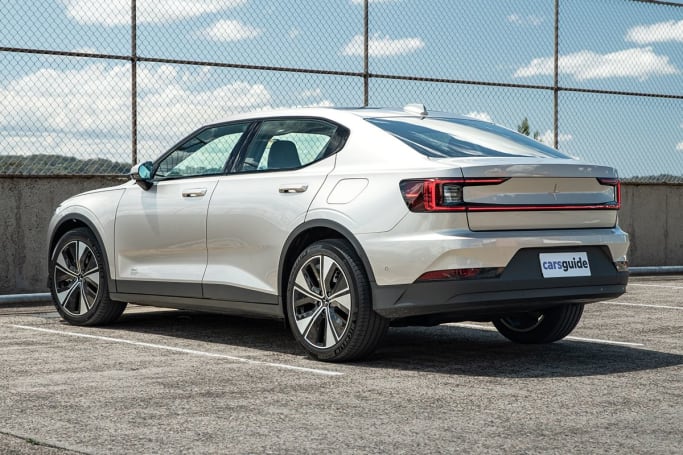
Holden class action! Holden Commodore, Colorado, Trailblazer, Caprice and more swept up in alleged faulty automatic transmission saga
Law firm Maurice Blackburn has launched a class action lawsuit against General...
Browse over 9,000 car reviews

There’s good news from Gothenburg for fans of performance cars, as the 2023 Polestar 2 has undergone a heavy update that puts it much more firmly in good stead to fight the Tesla Model 3.
The update, which CarsGuide reported on earlier this week when it was announced, will see the Polestar 2 go rear-wheel drive for its single-motor variants, while significant power and torque increases come alongside faster charging and improved tech.
But will it be enough to take on the electric car that is overwhelmingly the best-selling EV in Australia? Let’s take a look at the Polestar’s details up against the Tesla Model 3.
Starting at the entry level of the range, the Polestar 2 is now a 220kW/490Nm rear-wheel drive offering - that’s 50kW and 160Nm more - and has a much-improved acceleration of just 6.2 seconds to hit 100km/h, making it 1.2 seconds quicker than before.
It comes thanks to a combination of larger batteries, new permanent magnet electric motors, and silicon carbide inverters, and means the base Model 3 now has a potent rival from the Swedish brand.
The Tesla RWD base model, with a 6.1sec sprint to 100km/h, is only marginally quicker now, though its current $63,900 price before on-roads might keep it ahead of the Polestar 2, for which pricing is yet to be confirmed. The ‘current’ Polestar 2 range started from exactly the same price, but expect it to rise by at least a couple of thousand dollars with the update.
Polestar has, as mentioned, increased the battery sizes in its 2, up to 69kWh in the standard range and 82kWh in long-range models, increasing the range and charge capacity of the two ‘range’ versions.
The charging capacity is now up to 135kW for the standard-range and 205kW for long-range variants, while WLTP ranges are up to 518km and 635km respectively. The single-motor Polestar 2 can be had with either range option, though dual-motors are long-range only.
In Tesla’s entry Model 3, the 491km begins to fall short of the Swede, though it’s still impressive for the electric car space at its price.
At the top end of the new Polestar 2’s range is the dual-motor, long range version, which can be had with a Performance Pack for… more performance.
Without it, it offers 310kW/740Nm, up 10kW and 80Nm from before, and can hit 100km/h in 4.5 seconds. It also now has a rear-drive bias, giving it perhaps a little more of ‘driver’s focus’ than it had before.

The similar Long Range variant of the Model 3 has a 4.4sec sprint to 100km/h, though 580km of range doesn’t quite meet the 635km available from the Polestar.
Finally, the Performance variants of both begin to differ more, where the Tesla boasts a 3.3 second sprint to 100km/h. The Polestar's dual-motor performance cuts only a couple of tenths from its dual-motor time, coming in at a claimed 4.2 seconds.
It does, however, boast 350kW, which is hard to compare to a figure which Tesla doesn’t officially provide for its cars.
Polestar has also added a slew of active safety features to the 2 as standard, including blind-spot monitoring with steering support, cross-traffic alert with brake support, rear collision warning with braking, a 360-degree surround-view camera, and automatic dimming exterior mirrors. It has also added wireless phone charging as standard.
It brings the Polestar 2’s safety features more in line with the Tesla’s which have been highly praised by both reviewers and ANCAP alike.
It’s expected the Tesla Model 3 will undergo an update in 2023, though the Polestar 2 will arrive in the second half of the year, with order books to open in Q2.
Comments